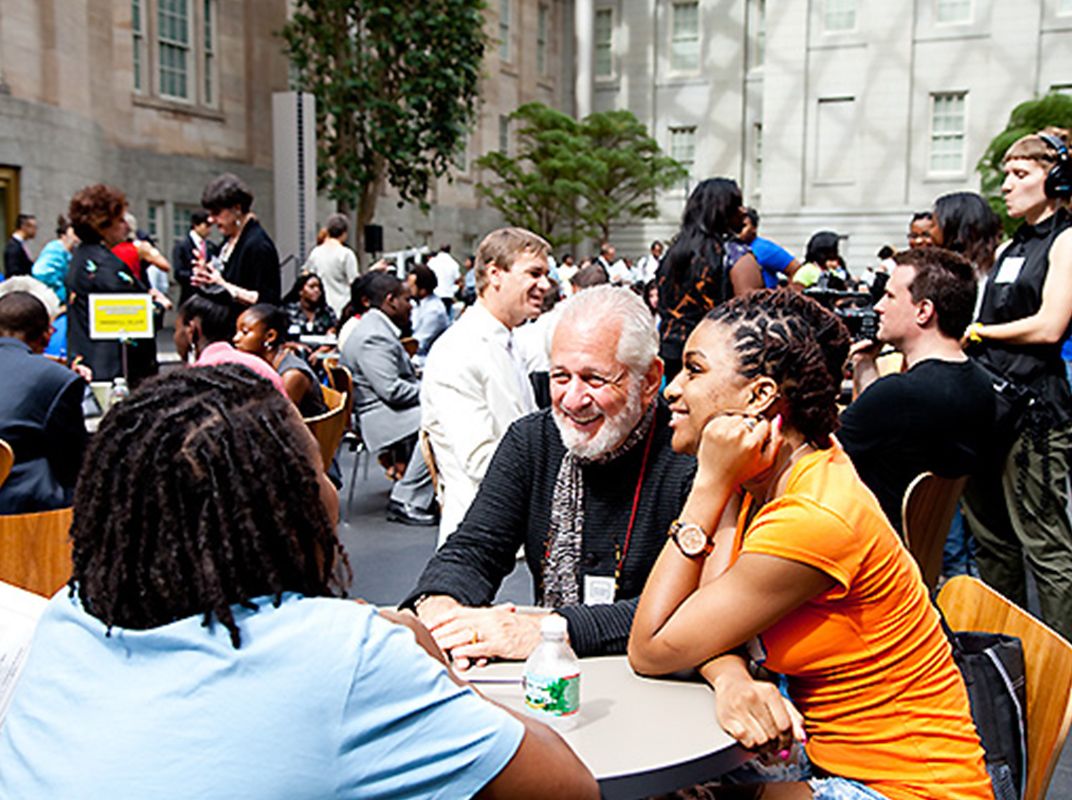Why TED Founder Richard Saul Wurman Thinks TED Is So Last Century
The creator of the popular speaker series spent Friday at the Smithsonian talking about the next step in his prolific design career
/https://tf-cmsv2-smithsonianmag-media.s3.amazonaws.com/filer/7c/8a/7c8a67eb-4f58-4818-bba6-9c99c189f5c4/20120716093011wurman_thumhfgbnail1.jpg)
"The game that can give you 10 extra years of life"
"Four principles for the open world"
"10 things you didn’t know about orgasm"
Buzzy titles like these now populate the TED talks website and attract thousands of viewers the same day they appear. Few people haven’t been told they “have to watch this one lecture on TED” by friends amped on a new idea. But the very first TED conference back in 1984 was a relative flop, according to its creator Richard Saul Wurman.
Though Wurman led TED into more prosperous times, still enjoyed today, he tired of the format and sold the enterprise to Chris Anderson in 2001. He is now preparing to unveil his newest project, WWW, calling it the conference of the 21st century. Wurman, this year’s winner of the Cooper-Hewitt National Design Lifetime Achievement Award, is known both for founding the blockbuster conference series and for his propensity to grow restless and move on to the next thing.

Starting in architecture, he hopped from book writing to conference organizing. With each venture, whether he was writing a guide to investing or a foreign city, Wurman used new ways to visualize and communicate information. Sometimes called an “intellectual hedonist,” his work follows his curiosity as it zigs and zags across media.
“I am an unusual choice to win the lifetime achievement award,” insists Wurman. His path to success doesn’t trace the typical vertical route up the hierarchy. Instead, he says he’s worked horizontally on disparate ideas united by his impulse to design and explain.
Along with this year’s nine other Design Award winners, Wurman had a packed Friday dining at the White House with Michelle Obama, but began his day at the Cooper-Hewitt’s third annual Teen Design Fair. Students from New York City and Washington, D.C. were invited to talk with dozens of experts working in architecture, fashion, urban and landscape design, industrial design and communications.
Students circled around Wurman, whose craft was listed as “Architecture/Interiors.”
“I don’t own a suit,” he tells the students. “I don’t own a tie. I never dress up.” Wurman delights in the iconoclast role and drew the students in with his frank way of talking. It’s no coincidence his TED conferences were modeled on the same kind of frank, anti-establishment thought.
Wurman began with one of his five methods of innovation: subtraction. “I subtracted panels of white men in suits, CEOs and politicians, lecterns, long speeches,” recalls Wurman.
By now his signature 18-minute time frame is familiar and the diversity of speakers he attracted introduced new voices to the spotlight. These bite-sized, personal lectures, though held in a very exclusive setting, make online viewers feel they are part of the idea and not just hearing about it. But even that format has grown cumbersome in Wurman’s mind.
On the move yet again, Wurman is working on a new project called WWW, which he describes as the conference of the 21st century. TED now falls squarely in the 20th century, according to him. Subtracting both set presentations and time constraints, WWW will create “intellectual jazz” between two “of the most extraordinary people” Wurman knows. For good measure, musical directors Herbie Hancock and Yo-Yo Ma will add improvised contributions. The whole project is driven by the experimental whims of its creator; “When I’m tired of listening to them, I pull them off stage.”
The first talk is set for September 18-20, but he says he has no clue who the participants will be yet. Once he settles on guests, Wurman will help build an app for each conference allowing viewers to learn as much as they possibly can about each speaker. If the speaker is Frank Gehry, “They’ll see Frank Gehry talking about 30 buildings he never got to build,” explains Wurman, promising interviews, baby photos and even a look at the personal notes and work of each subject.
Branded as the future of conferences, WWW actually draws inspiration from 19th century salons with Wurman playing the role of Gertrude Stein. As TED moves further into the realm of lectures and ideas that “make a difference,” Wurman seems more concerned with the very nature of an idea as a social product.
And, of course, he’s concerned with staying curious. As soon as something fails to hold his interest, he’s on to the next project.
It’s Wurman’s salon, after all, and we’re just stopping by.
/https://tf-cmsv2-smithsonianmag-media.s3.amazonaws.com/accounts/headshot/Leah-Binkovitz-240.jpg)
/https://tf-cmsv2-smithsonianmag-media.s3.amazonaws.com/accounts/headshot/Leah-Binkovitz-240.jpg)